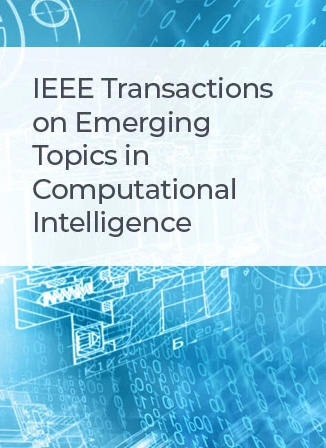Adaptive Non-Homogeneous Granulation-Aided Density-Based Deep Feature Clustering for Far Infrared Sign Language Images
IF 5.3
3区 计算机科学
Q1 COMPUTER SCIENCE, ARTIFICIAL INTELLIGENCE
IEEE Transactions on Emerging Topics in Computational Intelligence
Pub Date : 2024-12-11
DOI:10.1109/TETCI.2024.3510292
引用次数: 0
Abstract
In image clustering applications, deep feature clustering has recently demonstrated impressive performance, which employs deep neural networks for feature learning that favors clustering exercises. In this context, density-based methods have emerged as the preferred choice for the clustering mechanism within the framework of deep feature clustering. However, as the performance of these clustering algorithms is primarily effective on the low-dimensional feature data, deep feature learning models play a crucial role here. With far infrared (FIR) thermal imaging systems working in real-world scenarios, the images captured are largely affected by blurred edges, background noise, thermal irregularities, few details, etc. In this work, we demonstrate the effectiveness of granular computing-based techniques in such scenarios, where the input data contains indiscernible image regions and vague boundary regions. We propose a novel adaptive non-homogeneous granulation (ANHG) technique here that can adaptively select the smallest possible size of granules within a purview of unequally-sized granulation, based on a segmentation assessment index. Proposed ANHG in combination with deep feature learning helps in extracting complex, indiscernible information from the image data and capturing the local intensity variation of the data. Experimental results show significant performance improvement of the density-based deep feature clustering method after the incorporation of the proposed granulation scheme.基于自适应非均匀颗粒辅助密度的远红外手语图像深度特征聚类
在图像聚类应用中,深度特征聚类最近展示了令人印象深刻的性能,它使用深度神经网络进行有利于聚类练习的特征学习。在这种背景下,基于密度的方法成为深度特征聚类框架内聚类机制的首选。然而,由于这些聚类算法的性能主要是在低维特征数据上有效,因此深度特征学习模型在这里起着至关重要的作用。远红外线(FIR)热成像系统在实际场景中工作时,捕获的图像在很大程度上受到边缘模糊、背景噪声、热不规则性、细节不足等的影响。在这项工作中,我们展示了基于颗粒计算的技术在这种情况下的有效性,其中输入数据包含不可分辨的图像区域和模糊的边界区域。我们提出了一种新的自适应非均匀造粒(ANHG)技术,该技术可以根据分割评估指标自适应地在不均匀造粒范围内选择尽可能小的颗粒尺寸。本文提出的ANHG与深度特征学习相结合,有助于从图像数据中提取复杂的、不可分辨的信息,并捕获数据的局部强度变化。实验结果表明,采用该方案后,基于密度的深度特征聚类方法的性能得到了显著提高。
本文章由计算机程序翻译,如有差异,请以英文原文为准。
求助全文
约1分钟内获得全文
求助全文
来源期刊

IEEE Transactions on Emerging Topics in Computational Intelligence
Mathematics-Control and Optimization
CiteScore
10.30
自引率
7.50%
发文量
147
期刊介绍:
The IEEE Transactions on Emerging Topics in Computational Intelligence (TETCI) publishes original articles on emerging aspects of computational intelligence, including theory, applications, and surveys.
TETCI is an electronics only publication. TETCI publishes six issues per year.
Authors are encouraged to submit manuscripts in any emerging topic in computational intelligence, especially nature-inspired computing topics not covered by other IEEE Computational Intelligence Society journals. A few such illustrative examples are glial cell networks, computational neuroscience, Brain Computer Interface, ambient intelligence, non-fuzzy computing with words, artificial life, cultural learning, artificial endocrine networks, social reasoning, artificial hormone networks, computational intelligence for the IoT and Smart-X technologies.
 求助内容:
求助内容: 应助结果提醒方式:
应助结果提醒方式:


